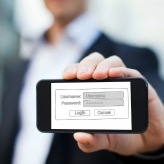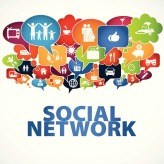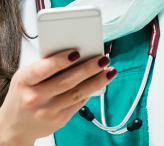Even a single second of downtime at your business can cause a ripple effect that sees operations become unhinged. While most Business Continuity Plans (BCPs) take into account longer power outages, short ones can be just as dangerous to your company. It is important that you and your employees be prepared should a power outage […]
 Even a single second of downtime at your business can cause a ripple effect that sees operations become unhinged. While most Business Continuity Plans (BCPs) take into account longer power outages, short ones can be just as dangerous to your company. It is important that you and your employees be prepared should a power outage strike. We’ve prepared some information to help you do just that.
Even a single second of downtime at your business can cause a ripple effect that sees operations become unhinged. While most Business Continuity Plans (BCPs) take into account longer power outages, short ones can be just as dangerous to your company. It is important that you and your employees be prepared should a power outage strike. We’ve prepared some information to help you do just that.
Power outages are one of the only disasters that can strike just about anywhere in the United States. If you are in Seattle chances are tropical storms are not going to be an issue and if you’re in Miami you aren’t going to fret over a blizzard, but losing power can occur anywhere, at any time and without warning.
A Department of Energy report noted that power outages cost American businesses nearly $150 billion in 2014 and added that increasing demand for energy coupled with an aging infrastructure could see the number of blackouts increase. While weather-related events are the most common cause of power outages in the U.S., it is far from the only thing that can disrupt energy service.
Since this is a problem that will continue to plague businesses, especially those ones that are unprepared, it’s important to be ready should a blackout strike. Here are a few things you should consider when it comes to power outages.
Power outages hurt in more ways than you think
The most notable issue a business faces when a power outage occurs is an inability to work. Employees often times sit around unable to do anything until the power is turned back on. Once the power does return, additional time is needed to safely turn everything back on and to check if all your files are still there.There are also numerous indirect consequences that your business may face either during or after a power outage. These include a loss of revenue from potential sales, a decrease in customer satisfaction and a drop in your company’s reputation. The more your company is prepared for a power outage, the better continuity you will see and the less damage will be done. While it may be impossible to completely avoid issues caused by blackouts, you can minimize their impact.
Be ready in case of an outage
One of the biggest sources of frustration for employees during a blackout is losing files they had been working on. Autosave features do help prevent this but sometimes you’ll still lose that one important note or sentence you didn’t have the chance to save. Uninterruptible power supplies (UPS) are one way to buy your employees a little extra time should the power go out. You're able to plug your computer into these devices and they will operate as a battery when the power goes out. The life of these power stations is anywhere from ten minutes to an hour for some models which should give you enough time to save your work and properly shutdown your computer.If you want to stay in business during a power outage, a standby commercial generator can help. These normally run on propane or natural gas and immediately switch on as soon as your main power supply goes out. If you aren’t concerned about the lights but want to keep your employees productive, equipping them 4G enabled devices with Office 365 or Google Apps will let them continue to work on files that have been saved and stored on the cloud.
Always test your outage plans
Regardless of what your company's plans are during a power outage, you will need to test them on a regular basis to ensure everything runs smoothly when the real thing does happen. If you utilize a UPS or standby generator, you will want to test these out every six months at the very least to make sure they function properly. If your business has special plans for what employees need to do during a power outage, you should run a practice drill on a yearly basis to ensure everyone is up to speed on their duties.They key to business continuity is preparation. Let our team of experts help prepare your business for anything thrown its way in 2016 and beyond.



